The Sweet Potato K+ Transporter IbHAK11 Regulates K+ Deficiency and High Salinity Stress Tolerance by Maintaining Positive Ion Homeostasis
- PMID: 37446983
- PMCID: PMC10346689
- DOI: 10.3390/plants12132422
The Sweet Potato K+ Transporter IbHAK11 Regulates K+ Deficiency and High Salinity Stress Tolerance by Maintaining Positive Ion Homeostasis
Abstract
The K+ transporter KT/HAK/KUP (K+ transporter/high-affinity K+/K+ uptake) family has a critical effect on K+ uptake and translocation in plants under different environmental conditions. However, the functional analysis of KT/HAK/KUP members in sweet potatoes is still limited. The present work reported the physiological activity of a new gene, IbHAK11, in the KT/HAK/KUP family in sweet potatoes. IbHAK11 expression increased significantly in the low K+-tolerant line compared with the low K+-sensitive line following treatment with low K+ concentrations. IbHAK11 upregulation promoted root growth in Arabidopsis under low K+ conditions. Under high saline stress, transgenic lines had superior growth and photosynthetic characteristics compared with the wild-type (WT). As for IbHAK11-overexpressing plants, activation of both the non-enzymatic and enzymatic reactive oxygen species (ROS) scavenging systems was observed. Therefore, IbHAK11-overexpressing plants had lower malondialdehyde (MDA) and ROS levels (including H2O2 and O2-) compared with WT under salt-induced stress. We also found that under both low K+ and high salinity conditions, overexpression of IbHAK11 enhanced K+ translocation from the root to the shoot and decreased Na+ absorption in Arabidopsis. Consequently, IbHAK11 positively regulated K+ deficiency and high salinity stresses by regulating K+ translocation and Na+ uptake, thus maintaining K+/Na+ homeostasis in plants.
Keywords: IbHAK11; K+ deficiency tolerance; K+ transporter; K+/Na+ homeostasis; high salinity tolerance; sweet potato.
Conflict of interest statement
The authors declare no conflict of interest.
Figures
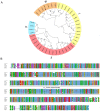

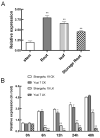




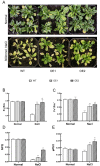
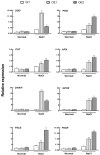
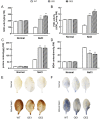
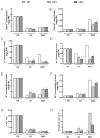
Similar articles
-
The Sweetpotato Voltage-Gated K+ Channel β Subunit, KIbB1, Positively Regulates Low-K+ and High-Salinity Tolerance by Maintaining Ion Homeostasis.Genes (Basel). 2022 Jun 20;13(6):1100. doi: 10.3390/genes13061100. Genes (Basel). 2022. PMID: 35741862 Free PMC article.
-
Elevated compartmentalization of Na+ into vacuoles improves salt and cold stress tolerance in sweet potato (Ipomoea batatas).Physiol Plant. 2015 Aug;154(4):560-71. doi: 10.1111/ppl.12301. Epub 2014 Nov 8. Physiol Plant. 2015. PMID: 25307930
-
Rice OsHAK16 functions in potassium uptake and translocation in shoot, maintaining potassium homeostasis and salt tolerance.Planta. 2019 Aug;250(2):549-561. doi: 10.1007/s00425-019-03194-3. Epub 2019 May 22. Planta. 2019. PMID: 31119363
-
Plant HAK/KUP/KT K+ transporters: Function and regulation.Semin Cell Dev Biol. 2018 Feb;74:133-141. doi: 10.1016/j.semcdb.2017.07.009. Epub 2017 Jul 13. Semin Cell Dev Biol. 2018. PMID: 28711523 Review.
-
KT-HAK-KUP transporters in major terrestrial photosynthetic organisms: A twenty years tale.J Plant Physiol. 2018 Jul;226:77-90. doi: 10.1016/j.jplph.2018.04.008. Epub 2018 Apr 21. J Plant Physiol. 2018. PMID: 29704646 Review.
References
-
- Kul R. Integrated application of plant growth promoting rhizobacteria and biochar improves salt tolerance in eggplant seedlings. Turk. J. Agric. For. 2022;46:677–702. doi: 10.55730/1300-011X.3035. - DOI
-
- Addique M., Kausar A., Iqra I., Akhter N., Mujahid N., Parveen A., Zaman Q., Hussain S. Amino acids application alleviated salinity stress in spinach (Spinacia oleracea L.) by improving oxidative defense, osmolyte accumulation, and nutrient balance. Turk. J. Agric. For. 2022;46:875–887. doi: 10.55730/1300-011X.3049. - DOI
Grants and funding
LinkOut - more resources
Full Text Sources
Research Materials

